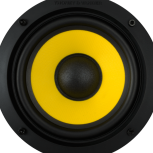Oversampling is one of those things where the benefit really depends on what the plugin is doing. If it’s a saturator, distortion, limiter, or analog-modelled EQ, then oversampling can absolutely make a noticeable difference — especially up in the high end where aliasing can creep in. Without it, those kinds of plugins can throw out nasty artifacts that sound fizzy or harsh. With it, they tend to sound a bit smoother, more open, and more "expensive" if that makes sense.
If you’re just running a reverb, delay, or basic EQ, oversampling probably won’t do anything other than chew CPU for no reason.
That said, sometimes the difference is subtle — it’s not like switching plugins entirely — but in a full mix it can add up, especially on anything doing aggressive processing.
I usually just enable it on render rather than in realtime unless I really need to hear the difference as I’m working. Saves the CPU hit and still gets the benefit on the final bounce.
Quick test: stick a saturation plugin on a drum bus, turn up the drive, A/B with oversampling on and off. That’s where it’s most obvious.
Hope that helps.
– Mark






